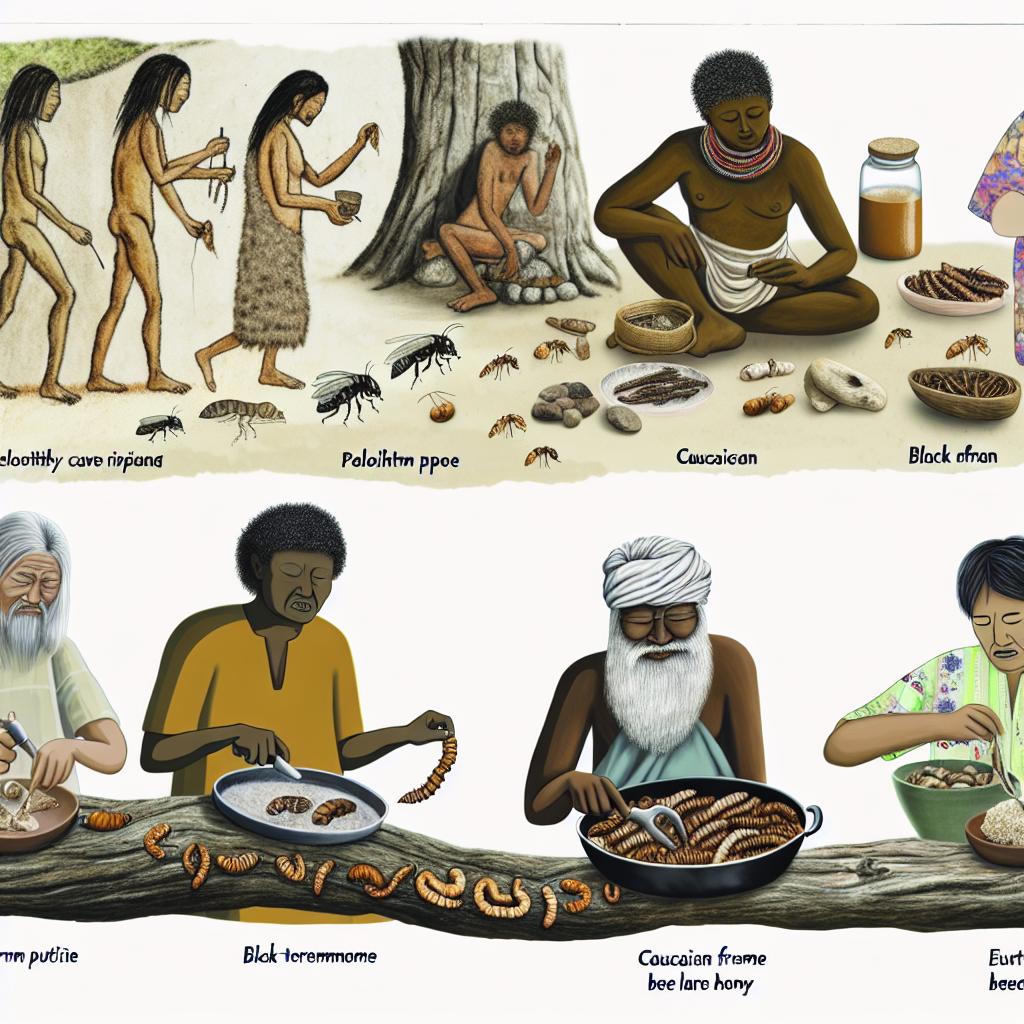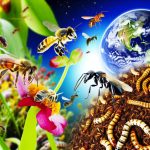The Role of Insects in Early Human Diets
Insects have been a part of the human diet for millennia. Evidence suggests that early humans, including hunter-gatherer societies, consumed insects as a reliable food source. This practice, known as entomophagy, is believed to have played an essential role in the development of early human diets.
Insects as a Source of Nutrients
Insects are rich in essential nutrients. They provide an abundant source of high-quality protein, vitamins, and minerals. For example, many insects contain significant amounts of iron, zinc, and fatty acids, comparable to or even exceeding those found in meat and fish. The nutritional benefits have made insects a crucial food source, especially in regions where other nutrient-rich food sources are scarce.
From a nutritional standpoint, insects offer an impressive profile, providing not just proteins and essential fatty acids but also micronutrients that are crucial to human health. The high protein content in insects is comparable to, or sometimes even greater than, that of conventional meat sources. This makes them an invaluable supplement to diets that might otherwise be deficient in these areas, particularly in marginal environments where traditional farming is not viable.
Furthermore, the iron and zinc levels present in many insects support essential bodily functions. Iron plays a critical role in oxygen transportation and energy production, while zinc is fundamental to immune system performance and cell function. Having these nutrients in a diet means supporting overall health and improving resilience to diseases, a necessary advantage that would have been particularly important for our ancestors living in unpredictable environments.
Insect Consumption Across Different Cultures
Different cultures have incorporated insects into their diets for various reasons such as nutrition, availability, and tradition. In many parts of Africa, Asia, and Latin America, insects have traditionally been consumed as part of the diet. For instance, in Africa, termites and locusts are common, while in parts of Asia, crickets and bamboo worms are popular. The consumption of insects is deeply rooted in these cultures’ food practices, often linked to agricultural cycles and local wildlife.
In these regions, the integration of insects into the diet extends back thousands of years, with indigenous knowledge about how best to harvest and prepare these delicacies being passed down through generations. In some societies, certain insects are regarded as seasonal specialties, harvested during specific periods when they are most abundant. This shows a symbiotic relationship with nature, where the cycles of biology and seasonality are understood and respected, and nothing is overexploited to ensure sustainability.
In contrast, Western cultures have largely eschewed this form of nutrition, partly because of the availability of other protein sources and partly due to cultural biases. Within these societies, insects are often viewed purely as pests or a nuisance rather than a viable food source. However, the diverse ways in which insects have been used globally underscore their versatility and potential as a sustainable food source.
Modern Interest in Entomophagy
Recently, there has been a growing interest in entomophagy as a sustainable food solution. This revival is due in part to the increasing awareness of the environmental impact of conventional livestock farming. Insects require significantly less land, water, and feed than traditional livestock, making them a viable option for reducing the ecological footprint of food production. As a result, entomophagy is gaining attention in Western countries, where startups and food companies are exploring insects like crickets and mealworms as sustainable food alternatives.
The modern shift towards entomophagy is driven by the need for sustainable solutions to the growing problem of feeding a ballooning global population while minimizing environmental damage. Insects offer a highly efficient conversion of feed into protein, which is particularly advantageous given the finite resources available for producing food. For example, crickets can convert feed into protein far more efficiently than cattle, and their farming results in substantially lower greenhouse gas emissions.
The potential of insects as a food source is also seen in their ability to be farmed on a much smaller scale than traditional livestock. This presents a unique opportunity for urban farming solutions, where space is inherently limited. Vertical farming techniques can be employed to produce insects sustainably, even in city environments, providing a fresh supply of protein-rich food close to urban centers.
Challenges and Future Prospects
Despite the potential benefits, challenges remain in promoting insects as a mainstream food source. Cultural perceptions and aversions persist, particularly in Western societies, where insects are often viewed as pests rather than food. Educating consumers about the nutritional benefits and environmental advantages is crucial for further integration. Research continues to improve the scalability of insect farming and develop appealing products for wider acceptance.
Overcoming the ‘yuck’ factor associated with insect consumption is one of the most significant challenges facing the entomophagy movement. For many, the visual and textural experience of eating insects can be off-putting. Thus, there is a push in the food industry to develop products where insects are processed into forms that are more palatable to Western consumers, such as protein powders or insect-based burgers. By taking this approach, the nutritional and ecological benefits can be enjoyed without necessarily having to confront the insects themselves.
Moreover, ensuring the scalability of insect farming requires advances in farming technology and food science. Research into the most efficient feed for different types of edible insects, disease management, and processing techniques will be fundamental to making insect farming a commercially viable alternative to traditional livestock farming.
Yet, the potential environmental benefits mean this is an area of innovation worth pursuing. As we continue to adapt to the growing challenges of climate change and resource scarcity, diversifying our food sources by including more sustainable options like insects could become imperative.
For more information on the role of insects in global food systems, you can explore resources from organizations focusing on sustainable food practices, such as the Food and Agriculture Organization.


